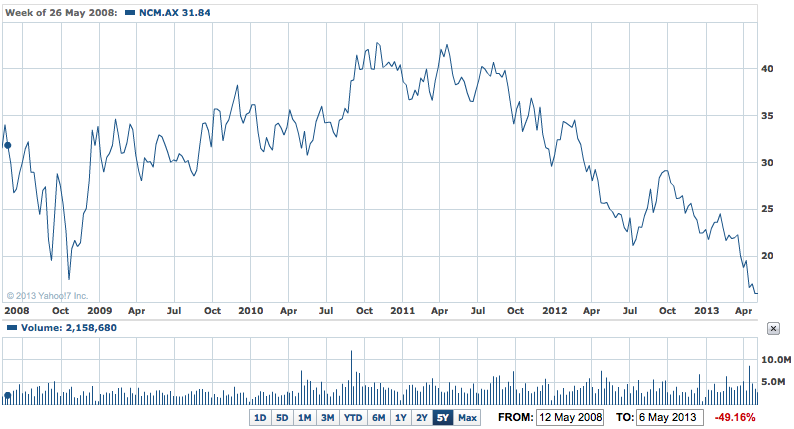Investors and company management quite often ignore the most telling factor in investment success and that is the ability of those very same managers (which include the company boards) to extract value for shareholders, employees, the community generally and of course for themselves.
Too many times in too many companies have we seen managers and boards extracting value for themselves (and often for a small group of shareholder friends) and leaving shareholders and employees in the lurch.
Just look at some of the big company flops and disasters of the past two decades – starting with the near deaths of Westpac and ANZ Bank (helped by weak regulation) in the early 1990s, the AMP Society on at least two occasions, the various companies in Alan Bond’s empire; BHP before the Billiton merger – more recently Allco Financial, ABC Learning, Rams, Rio Tinto, Babcock and Brown – and the list goes on.
We could mention those non-listed finance companies as well and a flock of property groups, listed and unlisted. Anyone remember Centro and its appalling management?
Many of these companies survived – BHP, AMP and the banks, for example, as management and boards were cleaned out and higher calibre people were found and put in place. For example, Westpac owes a big debt to American Bob Joss who was imported to turn it around, which did in a fine fashion, and then found new managers to help continue to improvement (David Morgan). Even Centro was saved in a fashion and the rump has lived to go on trading in Australia.
But there have been been successes where good management has succeeded good management and succeeded in producing a string of strong results. Look at Wesfarmers and Woolworths where boards and managers have done well for shareholders, employees and others (although there’s the odd question now being asked of Woolies now about its Masters hardware joint venture and its losses).
BHP Billiton in the past five years has been managed very well, but still managed to lose well over $US4.5 billion in a play in lateritic nickel in WA and Queensland. Remember how its Magma Copper adventure in the US in 1996 hurt the company, produced a major change at board and CEO level, which in turn then allowed the company to move into its current growth phase with the Billiton takeover.
The big four banks have done well, thanks to the help from the regulators, the Federal government and taxpayers in the GFC and super funds and other investors who helped refresh their weakened capital situations.
But managers and boards have repaid that support with very solid earnings growth, higher payouts and share prices – one of those win-win situations for everyone, despite all the moaning and groaning that goes on in the media.
The quality of management which includes the board, CEO and their direct reports – can be a defining factor for investors – the difference between outperformance and average gains, and failures.
So with that point in mind – let’s look at a few recent examples where management has proven to be a decisive factor, for good or bad.
Newcrest Mining has been one of the worst offenders in the value destroying stakes in the past couple of years, despite those record and near record prices for gold.
NCM – 5-Year Chart

The company in fact has spent much of the last 18 months not riding the gold price higher, but battling to stay on as production problems at the expensive Lihir mine in PNG and other issues have steadily drained market support for the company.
The recent March quarter production report revealed the company had cut the jobs of 150 people, mostly from back offices, as it tries to regain market confidence. And the company is reviewing the future of some of its mines (not identified).
Not helping was yet another production downgrade at the end of March, the second or the third in a year. When the gold price plunged early last month, Newcrest was left exposed and the shares slumped to just above $16 – they had been well over $40 in late 2010. The cause of all this angst – that high cost takeover (around $9 billion in cash and shares) for Lihir, which has become a millstone around its neck.
The management of the company who did that deal have moved on. Ian Smith, is now at Orica after quitting the gold miner at the start of 2011, only five months after completing the Lihir deal in September, 2010. That was a surprise, as has been the loss of value at Newcrest since the takeover as production has fallen, costs have risen and investors have started to view the company as a loser of value, not a producer.
That $9 billion spent on Lihir was been wasted. Shareholders have lost income, lost value and lost the opportunity to really ride the surge in gold prices. There’s a lot of ground to be made up. Those losses can never be recovered.













